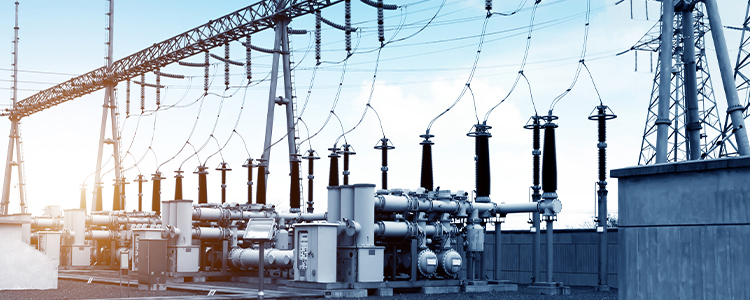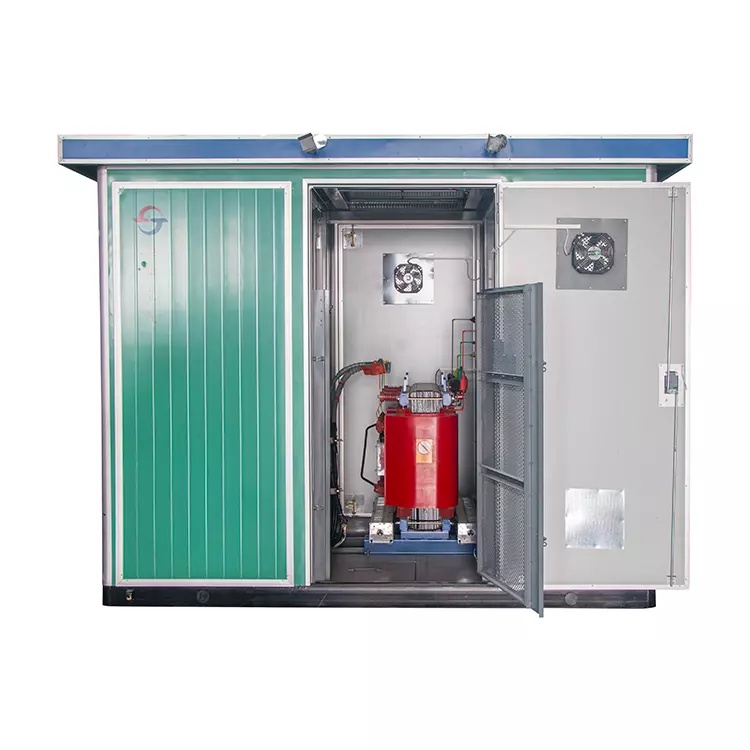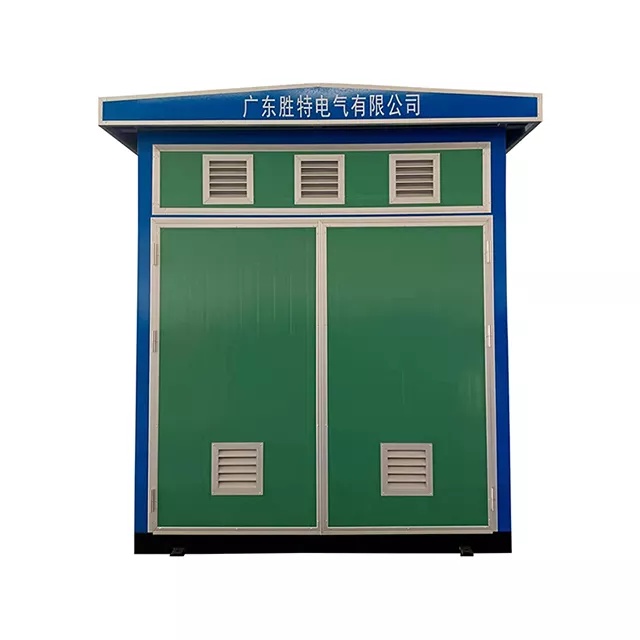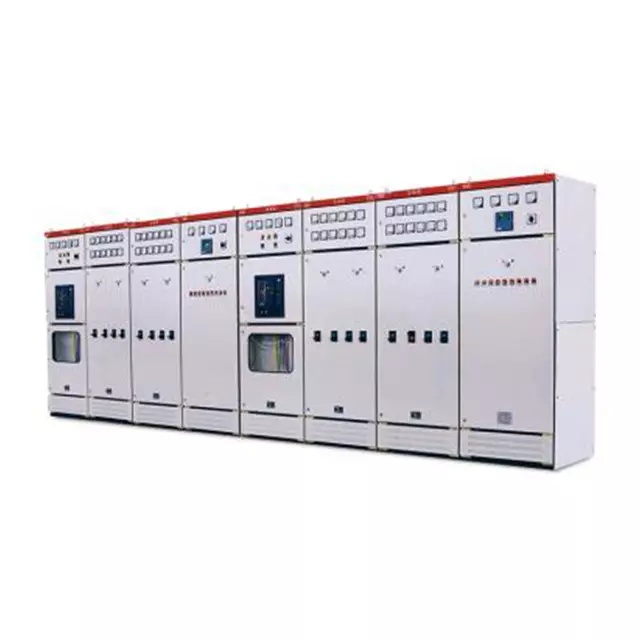- All
- Product Name
- Product Keyword
- Product Model
- Product Summary
- Product Description
- Multi Field Search


Views: 0 Author: Site Editor Publish Time: 2025-10-30 Origin: Site
The power grid infrastructure depends on electrical substations to function as essential connections between power plants and customers who need electricity. The facilities perform three essential functions by converting voltage levels and directing electricity to correct locations while implementing protective systems for safe electrical system operation. The power grid depends on contemporary electrical substations which house transformers and switchgear and circuit breakers and monitoring systems to deliver uninterrupted electricity to residential and commercial and industrial areas.


The basic operations of electrical substations demonstrate their essential role in power distribution systems.
Electrical substations operate as central locations which connect power generation facilities to distribution networks. The facilities accept high-voltage power from transmission lines that start at power plants before transforming it for distribution to local areas. The facilities enable the efficient transmission of electrical power through long distances while ensuring both system stability and operational reliability. The electrical grid achieves continuous power transmission through substation facilities which connect different voltage levels.
Substations use specialized equipment like Shengte epoxy resin dry-type transformers, which offer high efficiency, low losses, minimal noise, and excellent heat dissipation, allowing 120% capacity with forced air cooling. Step-down transformers reduce transmission voltages to distribution levels for local needs, while step-up transformers increase voltages for efficient long-distance transmission. Voltage transformation minimizes losses and ensures proper operation of electrical devices.
The distribution network uses advanced switching equipment at substations to direct electrical power through specific paths. The system enables utilities to control power distribution while separating defective areas and preserving electricity supply during system maintenance operations. The system uses real-time monitoring data to control power distribution for maximum network reliability and performance.
The protection and control systems in contemporary substations operate through continuous monitoring of electrical parameters. The systems track electrical parameters to identify irregularities which trigger protective responses to stop equipment damage. The automated control system operates to stabilize voltage levels and control frequency and power quality while enabling system operators to monitor the system from a distance.
The transformation and distribution functions of electrical substations depend on multiple essential components which operate as a single system.
Electrical substations rely on transformers for voltage conversion to enable efficient power transmission and distribution. Dry-type transformers use specialized insulation to prevent arcing, with their iron core and windings outside insulating oil, operating via electromagnetic induction to transform voltages while maintaining efficiency. The power industry uses oil-immersed transformers for transmission systems and dry-type transformers for safer operation in urban areas.
Switchgear assemblies function as critical components which enable safe switching operations and electrical isolation within substations. The protective enclosures of these units contain circuit breakers together with disconnect switches and control equipment. The system allows personnel to perform safe electrical circuit connections and equipment isolation for maintenance and network configuration changes. The latest switchgear systems use improved insulation systems and automated control systems which boost operational safety and dependability.
Circuit breakers function as protective devices which instantly stop electrical current flow when fault conditions occur. The devices identify unusual current patterns and trigger immediate shutdowns to safeguard equipment and stabilize system operations. Protective relays track different electrical signals to control circuit breaker actions which enables them to isolate defective sections while keeping power lines active to unaffected areas.
The physical distribution of electrical current in substations depends on busbars and conductors which serve as electrical pathways. The system requires these components to manage high current flow while keeping resistance levels minimal and maintaining sufficient mechanical stability. The design of busbars enables efficient power distribution between substation elements while allowing different operating setups through flexible connection options.


The power transformation process operates through a controlled sequence which enables both safe and efficient energy conversion.
The substation receives high-voltage electricity through transmission lines which connect through overhead or underground transmission lines. The incoming line equipment at this location consists of disconnect switches and surge arresters and current/voltage transformers which serve both isolation and measurement purposes. The substation facility receives safe power flow monitoring through these components which enable transmission line power entry.
The main insulation medium of oil immersed transformers consists of oil which also functions as their cooling agent. The sealed design of this transformer protects its oil from outside air while providing better safety and easier maintenance and higher operational reliability. The transformation process converts high transmission voltages into suitable medium or low voltage levels for distribution networks. The voltage conversion system enables safe and efficient power distribution to residential and commercial and industrial customers while preserving maximum transmission efficiency.
The converted power from voltage transformation passes through switchgear equipment which directs it to multiple distribution feeders. The feeders distribute power to particular areas and customer segments through switching equipment that allows both load control and system reorganization. The power distribution becomes balanced through this process while system reliability improves because of redundant power paths.
The monitoring systems of continuous monitoring track electrical parameters from the start of transformation until the completion of routing operations. The transformer includes an intelligent temperature controller which enhances operational safety and reliability. The systems operate automatically through real-time condition monitoring and activate protection mechanisms when they detect unusual system behavior. The system allows remote control operations through advanced automation which optimizes performance while upholding safety protocols.
The electrical power system infrastructure contains various substation types which perform distinct operational roles.
Transmission substations enable the transfer of bulk power between major generation facilities and regional distribution networks. The facilities operate at voltages above 115 kV while using multiple transformers and extensive switchgear and complex control systems. The power grid depends on transmission substations as essential connection points which enable efficient power transmission across long distances and link different utility systems together.
Distribution substations transform transmission voltages to distribution levels for residential and commercial power supply. Pad-mounted transformers, also called American Box or combined transformers, are key in cable distribution networks, operating at medium voltages with protection systems tailored to local needs. Their compact design minimizes footprint in urban areas.
Converter substations serve as critical infrastructure to link alternating current (AC) power systems with direct current (DC) power systems. The facilities use power electronic devices to transform AC power into DC power for extended transmission lines and to convert DC power into AC power for distribution networks. The importance of converter substations continues to grow because they support both renewable energy systems and grid connection initiatives.
Mobile substations function as emergency power transformation systems which operate during both emergency situations and scheduled maintenance periods. The portable units enable fast deployment for service preservation when permanent substation equipment needs repair or replacement. The mobile substations consist of trailer-based transformers and switchgear systems which enable fast connections to operational power networks.
Professional suppliers of electrical equipment are indispensable for both building new substations and keeping the existing ones running smoothly.
SHENGTE operates as the leading manufacturer of distribution transformers in the market. The company offers a complete selection of dependable equipment which supports contemporary power system requirements. Our experienced transformer manufacturing team delivers dry-type distribution transformers and oil-immersed transformers together with integrated low voltage switchgear and high voltage switchgear systems for safe and efficient operation in various applications. The company follows rigorous quality protocols while delivering complete technical assistance for substation construction projects. The company employs experienced R & D and design staff who bring more than ten years of expertise and national qualifications to their work.


Electrical substations are critical for connecting power generation to consumers, enabling voltage transformation, power routing, and protection. They use complex equipment like transformers, switchgear, and control systems. Different substation types serve bulk transmission or local distribution. Modern substations employ advanced monitoring and automation for enhanced safety, reliability, and performance. Proper equipment selection and design are key to optimizing power system performance while meeting safety and environmental standards.
Q1: What is the primary function of a substation?
A: A substation transforms voltage levels and directs electrical power safely and efficiently from generation facilities to distribution networks. It converts high transmission voltages to distribution-friendly levels, incorporating protection, control, and switching functions for a reliable power supply.
Q2: What are the operational principles of transformers in substations?
A: Transformers in substations use electromagnetic induction to change voltage levels while maintaining power transfer efficiency. Their cylindrical oil-immersed windings ensure balanced ampere-turn distribution, reducing high transmission voltages to medium or low distribution voltages for safe, efficient power delivery with minimal losses.
Q3: What role does switchgear play in substations?
A: Switchgear ensures safe substation operation by providing switching, isolation, and protection functions. It enables circuit connections, disconnections, and equipment isolation for maintenance and fault protection. Modern switchgear uses automated controls and advanced protection mechanisms to enhance reliability, safety, and network flexibility.